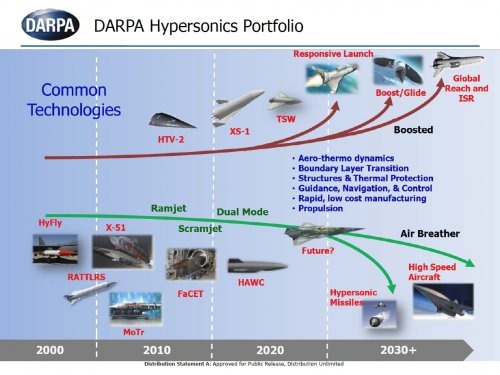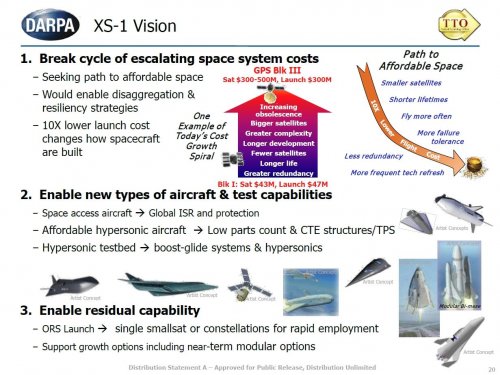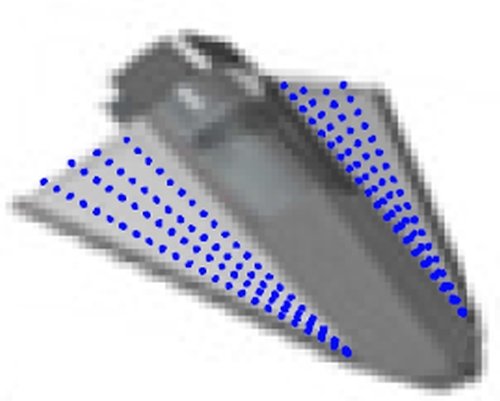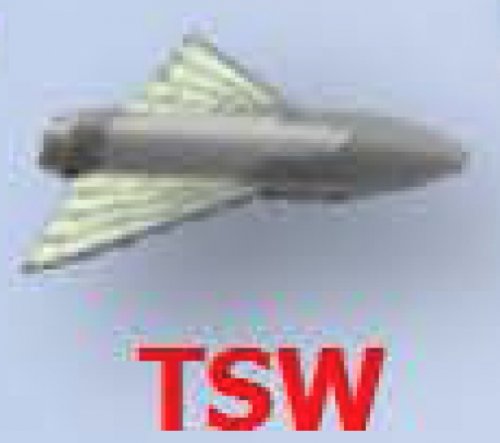The Pentagon, aiming to expand its investment in cutting-edge technologies, is planning new joint program offices focused on hypersonic missiles and artificial intelligence, Defense Secretary Jim Mattis told lawmakers today.
Mattis, who appeared before the House Armed Services Committee to discuss the Defense Department's fiscal year 2019 budget request, said Under Secretary of Research and Engineering Mike Griffin is a "varsity player" who is hard at work on establishing new programs, with hypersonics as his top priority.
"We're going to move things into production prototyping," he said. "We are not going to have more paper. We are going to move on hypersonics, move on AI. What do I mean by move? A joint program office, not a bunch of different organizations all feeling a way [forward]."
At present, the most high-profile joint program office at DOD oversees the F-35 Joint Strike Fighter, the most expensive weapons acquisition effort in U.S. history.
Mattis said DOD's FY-19 budget request would begin to establish a more robust hypersonics program, but added that more can be expected in the near future.
"What I found is what we call a limiting factor," he said. "It was that we were not set up to embrace the whole challenge of hypersonics. Within the budget, we've addressed this to a degree, but we are going to have to have a complete support program for this. This is going to be a major effort. Just rest assured . . . we know where we want to go and this is one of the key building blocks of getting us there."
Mattis said DOD has similar aspirations for artificial intelligence.
"We have a number of AI efforts underway right now," he said. "We're looking at pulling them all together."
Mattis stressed the hypersonic program would be a serious effort intended to transition technology onto the battlefield, not another laboratory.
"Our goal is to get something in the air," he said. "It is focused, it is going forward. It is our number one priority of innovative technologies, not to the exclusion of artificial intelligence."
Griffin, the former chief of NASA, has said publicly that hypersonics development is his top priority.
"He's really got what he needs in terms of experience to drive this forward," Mattis said of Griffin. "Not for theory, not for experiments, but putting something out for test and moving it into a capability."
Meanwhile, Missile Defense Agency Director Lt. Gen. Samuel Greaves told the Senate Appropriations defense subcommittee April 11 there is "extremely high" risk that hypersonic strike weapon technology being developed in China and Russia could proliferate to North Korea and Iran.
"I'm not a fortune teller, but I know the future," Greaves said. "The hypersonic threat is real and it is coming. Just the open press reports on what the Chinese and Russians have been doing in that area for the last five to 10 years should be cause for concern."
The Defense Science Board has also recommended DOD quickly develop and field an interim capability to defeat hypersonic weapons threats.
House Armed Services Committee Chairman Mac Thornberry (R-TX) told reporters after the hearing he was surprised members questioned the defense secretary about hypersonics and other developmental technologies.
"I think members are very concerned not just about what's in front of us, but also what's ahead of us," he said.
Thornberry, whose full committee is meeting May 9 to mark up the FY-19 defense authorization bill, said the legislation would be focused on ensuring DOD has what it needs to invest in rebuilding readiness, but also in winning future fights.
"There's a number of policy objectives, but I think fixing the force, preparing for the future are at the top of the list," he said.





